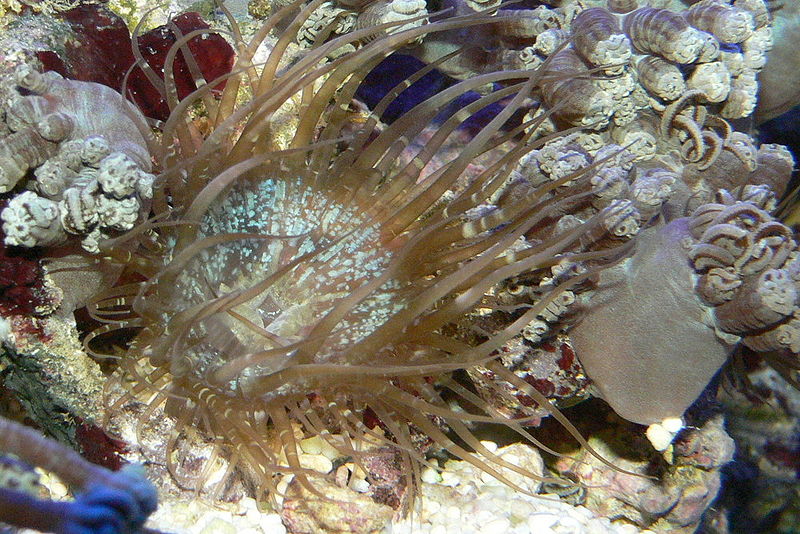 That’s an interesting title right? What is there about setting up a beginner African Cichlid tank in your mid-20s that differs from setting one up at age 47 for example? Well, based on some of the responses to my questions from the cichlid gurus I’m surrounded by (check out some of Jose’s articles here, here and here: this guy’s enthusiasm for these fish is totally contagious both on paper and in real life) I have a different take on my tank’s setup and what I want from it, than other folks, and I’m going to talk about that here.<!–more–>
That’s an interesting title right? What is there about setting up a beginner African Cichlid tank in your mid-20s that differs from setting one up at age 47 for example? Well, based on some of the responses to my questions from the cichlid gurus I’m surrounded by (check out some of Jose’s articles here, here and here: this guy’s enthusiasm for these fish is totally contagious both on paper and in real life) I have a different take on my tank’s setup and what I want from it, than other folks, and I’m going to talk about that here.<!–more–>
First a little background. My name is Matt R, and I work in the marketing department at TFP/TPP. Prior to working here, my fish experience maxed out with a few freshwater angels, and the obligatory carnival goldfish once in awhile (may they RIP). I recently bought my first house, and, in addition to wanting to try something new to expand my knowledge, I wanted something cool for my place. So here are my top 5 reasons why this setup works best for me.
1. Quick Reward
I’m from the video game generation. I grew up on Mario and I play Call of Duty. From everything I’ve seen and observed of fish, Cichlids give the best chance to see something cool quickly. I’m not going to sit there and watch my tank for 20 minutes at a time, but I can check out my Ngara and Taiwan Reef and figure out who’s dominant, who’s ready to breed, and who’s so stressed they’re going to have to “leave the island”. It’s like a reality TV show in an aquarium, each episode 5 minutes.
2. Upside – More Bang for the Buck
Ok, so I’m a big baseball fan, and I play in Rotisserie leagues. Anyone who knows anything about this knows that players with upside and little investment are the ticket to victory, and this carries over for me with my Cichlid tank. With Cichlids, you get the insane color options of saltwater fish and reef tanks, but without having to add salt, run a skimmer, or invest in High Output lighting. It’s easier on my budget.
3. Many are Mouth Brooders
 Seriously…they keep their kids in their mouths? Maybe I’m kind of nerdy, but that’s a pretty cool thing to watch. Have you seen this in action, or on the Planet Earth series? It deserves to be on anyone’s top 5 list for a Cichlid tank.
Seriously…they keep their kids in their mouths? Maybe I’m kind of nerdy, but that’s a pretty cool thing to watch. Have you seen this in action, or on the Planet Earth series? It deserves to be on anyone’s top 5 list for a Cichlid tank.
4. You can be lazy (Kind of)
I love my tank, but I’d be lying if I said I focused a lot of time and energy to it all the time. I’m legally required to endorse water changes, water testing and gravel vacs, and I do them regularly..but…well…sometimes I may not be right on schedule. Based on my own experiences, and from what I’ve heard from the experts here, Cichilds are pretty darn resilient…which leads me to reason number 5
5. Cichlids are tough
They are. It’s a fact of life when you evolve in an isolated lake. Though they may live in a community, it’s a dynamic, angry, restless community..and…call me dark..but that’s somehow appealing to me. In a cichlid tank, you have to live with the reality that turf wars are an everyday threat. Nothing against them, but you’re not going to get that intensity with a cory cat and danios (sorry Craig).
Thanks for reading.
If you have any comments or questions, I’d love to hear them below, or just say @MattR on our Facebook page .
 If you have a saltwater tank, there is a good possibility that you’ve had some experience with the pest anemone, Aiptasia. Aiptasia can seem to spring from live rock or new corals from nowhere, quickly becoming an unsightly “weed” all over the tank. But despite their prolific nature and the possibility of damage to coral colonies from their stings, eradication may not be your only solution.
If you have a saltwater tank, there is a good possibility that you’ve had some experience with the pest anemone, Aiptasia. Aiptasia can seem to spring from live rock or new corals from nowhere, quickly becoming an unsightly “weed” all over the tank. But despite their prolific nature and the possibility of damage to coral colonies from their stings, eradication may not be your only solution. That Fish Blog – Aquarium Advice and Information
That Fish Blog – Aquarium Advice and Information


